Portfolio Risk Management: Definition, Importance, Types, Measurement, Strategies, Tools
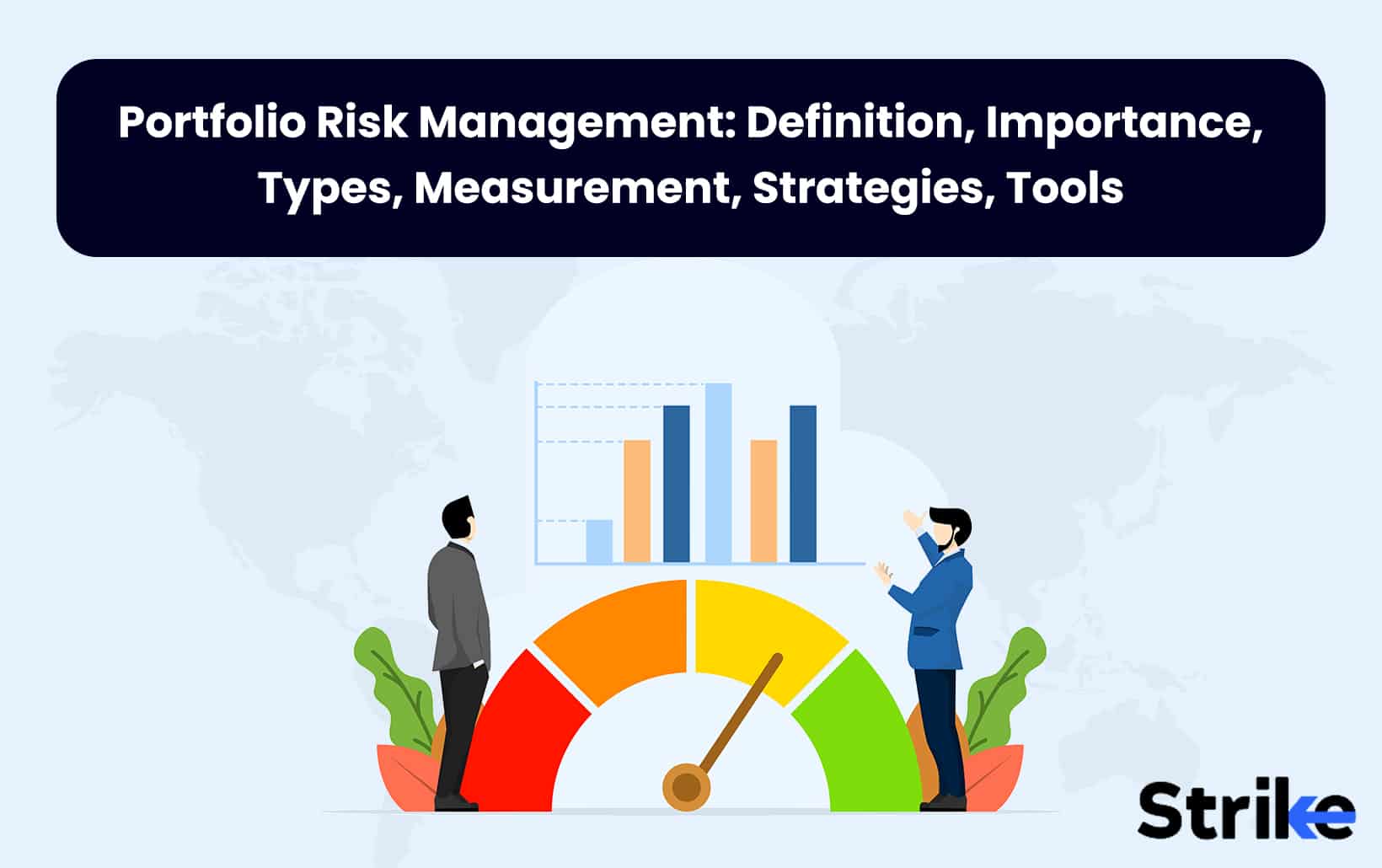
Risk management is critical for investors navigating the intricacies of financial markets. Risk management includes managing the risk of an investment to match the investment style. Risk-taking enables seeking returns, but uncertainties abound that could derail well-laid investment plans. To endure inevitable volatility while achieving objectives, a holistic methodology is required to make risk an investor’s ally rather than an enemy.
This treatise aims to educate on defining risks, measuring exposures, developing strategies, and deploying tools to instill discipline and clarity amid confusion. We begin by exploring the meaning of risk management for stock market participants and why controlling hazards proves integral to long-term prosperity. Understanding risk types reveals subtleties often overlooked. The quantitative assessment then aligns appetites with abilities to stomach setbacks.
A diversity of techniques empowers customizing protection to specific needs. Diversification, allocation, hedging, position sizing, and more grant flexibility. Ongoing adaptation ensures strategies morph in step with shifting goals and conditions. Education further fortifies resolve by building intellect to scrutinize risks logically, not emotionally.
What is portfolio risk management?
Portfolio risk management refers to the process of measuring and controlling the level of risk in an investment portfolio. Portfolio risk management for stock market investors typically involves strategies to minimize the chance of losing money while still working to achieve one’s investment goals.
Why is managing portfolio risk important?
Managing portfolio risk is important for stock market investors to protect their capital and work toward their long-term financial goals. An effective risk management strategy helps minimize losses during periods of market turbulence. It also ensures one’s asset allocation and position sizes accurately reflect their risk tolerance.
How do you know your risk tolerance?
To know your risk tolerance, first, contemplate your investment timeline. Investors with longer time horizons until they will need to withdraw funds generally tolerate more risk. You have time to ride out periodic downturns when investing for retirement decades into the future. The stock market historically recovers from crashes and bear markets given enough time. But your risk tolerance decreases if you will soon need your money for a major purchase.
Next, analyze your financial situation holistically. Consider your job security, income stability, debt levels, and the existence of any emergency savings. Your risk tolerance shrinks if you have minimal cash reserves and a precarious financial position. Prioritise assets that preserve capital rather than chasing potentially higher but volatile returns.
Third, examine the emotional side of handling risk. How would you react when stock prices inevitably fall? Monitor your stress levels during periods of market turbulence. While investing based on emotions alone is dangerous, your feelings do contain valuable information about your innate risk preferences. Staying disciplined through volatility requires self-awareness.
Above all, remain flexible over your lifetime. Risk capacity changes as your finances, career stage, family situation, and obligations shift. Revisit your risk tolerance at least annually before major life changes or after time passes following any extreme market event. While past behavior helps indicate your risk preferences, the future remains unpredictable. Build an investing plan resilient enough to evolve alongside your changing risk tolerance.
What are the types of risk involved?
The main types of risks involved while investing in the stock market are market risk, credit risk, concentration risk, interest rate risk, liquidity risk, horizon risk, longevity risk, operational risk, inflation risk, currency risk, geopolitical risk, regulatory risk, and reinvestment risk.
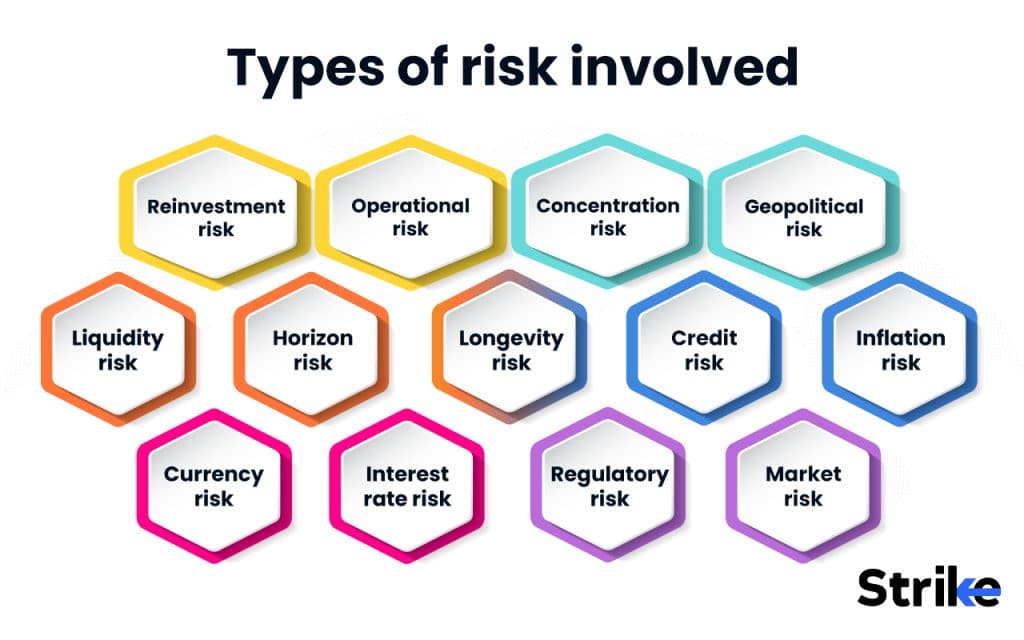
Market risk refers to the risk that an investment sometimes faces due to overall fluctuations in the financial markets.
Credit risk is the risk that a company sometimes defaults on its debt obligations due to deterioration in its financial health.
Concentration risk refers to the risk arising from a lack of diversification in an investment portfolio.
Horizon risk is the risk that an investor’s investment horizon is sometimes shortened due to unforeseen circumstances.
Longevity risk refers to the risk of outliving one’s assets in retirement.
Operational risk refers to losses arising from inadequate or failed internal processes, fraud, systems failure, or human error.
Inflation risk arises from the decline in purchasing power of investment returns due to high inflation.
Currency risk impacts investors who invest in foreign stocks or stocks of Indian companies with a high share of revenues from exports.
Geopolitical developments like wars, civil unrest, sanctions, and terror attacks negatively impact stock markets and global economic growth.
Changes in regulations and government policies on sectors, taxes, tariffs, etc., impact the business environment and prospectus of companies operating in those sectors.
Reinvestment risk affects investors relying on regular income generated from investments to fund expenses.
How do you measure the risk of a portfolio?
The main techniques used for measuring risk involved in stock market investments include standard deviation, beta, VaR, CVaR, dropdown, Sharp ratio, Sortino ratio, maximum dropdown, tracking error, and alpha.
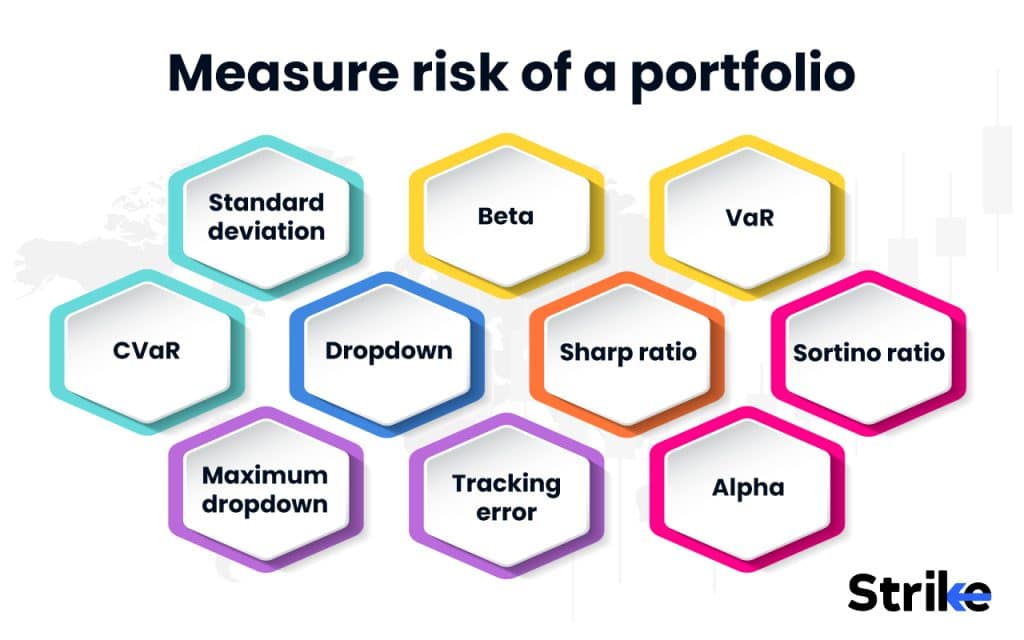
Standard deviation is a statistical measure that quantifies the amount of variation or dispersion in a set of data points from its mean.
Beta measures the systematic or market risk of a portfolio. It quantifies the degree to which a portfolio’s returns vary relative to benchmark returns. A beta of 1 indicates portfolio returns move in sync with the benchmark, like the Nifty. A beta above 1 indicates amplified moves compared to the index, while a beta below 1 indicates more muted moves.
VaR measures the potential maximum loss on a portfolio over a specified time period at a
given confidence level. For example, a 1-day 5% VaR of Rs 10 lakh means a 5% probability of the portfolio losing more than Rs 10 lakh over one day. VaR summarises portfolio risk exposure based on statistical models and historical data.
CVaR measures the expected loss, given that the VaR threshold has been breached. For example, 1-day 5% VaR is Rs 10 lakh, and CVaR measures average loss when the loss exceeds Rs 10 lakh. It gives an estimate of tail losses beyond VaR.
Maximum drawdown measures the worst peak-to-trough decline in portfolio value over a period. It indicates the worst cumulative losses borne by an investor if they remained invested through the period.
Sharpe Ratio measures risk-adjusted return by dividing the portfolio’s excess returns over the risk-free rate by the standard deviation. It indicates the additional return earned per unit of risk taken. A higher Sharpe Ratio indicates superior risk-adjusted returns. It facilitates the comparison of returns on a risk-normalized basis across portfolios.
The Sortino Ratio is similar to the Sharpe Ratio but uses downside deviation instead of standard deviation. Downside deviation focuses only on portfolio returns falling below the minimum acceptable return or MAR (usually risk-free rate).
Tracking error measures how closely a portfolio follows its benchmark. It is the standard deviation of excess returns over the benchmark. A lower tracking error implies the portfolio has similar risk-return characteristics as the benchmark.
Alpha measures the excess return of a portfolio over its expected return based on its beta and the market return. Positive alpha indicates value added by the fund manager through superior stock selection or timing compared to the market.
What are the different strategies for risk management?
Diversification, asset allocation, hedging, using risk-adjusted return measures like the Sharpe ratio, implementing stop-loss and take-profit orders, periodic rebalancing to maintain the original asset allocation, and proactive liquidity management are among the key risk management strategies employed.
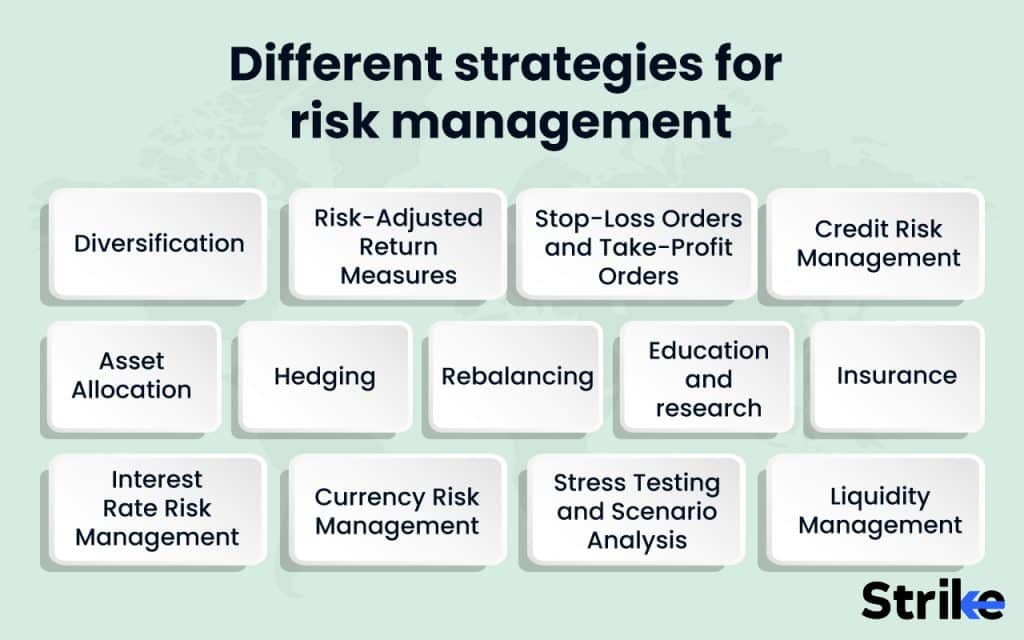
1.Diversification
Diversification is one of the most important and effective strategies for managing risk in stock market investing. The logic behind diversification is simple: don’t put all your eggs in one basket. By spreading investment capital across different stocks, market sectors, asset classes, industries, and geographic regions, investors reduce the overall volatility and risk profile of their portfolio. Proper diversification allows investors to maximize returns for a given level of risk or, equivalently, take the minimum risk for a desired level of return. A diversified portfolio combines assets with different risk profiles that don’t necessarily move in tandem. Others are sometimes stable or even appreciating when some assets are declining. These differences in price behavior moderate overall portfolio swings.
2. Asset Allocation
Asset allocation involves dividing an investment portfolio between different asset classes to optimize the risk-return profile aligned with an investor’s financial goals, time horizon, and risk tolerance. The three main asset classes are stocks, bonds, and cash equivalents. Allocating capital across these assets is a fundamental way to manage risk in stock market investing.
Stocks offer higher potential returns over time but also higher short-term volatility. Bonds provide more conservative but steady interest income and capital preservation. Cash is very stable but generates minimal returns. Adjusting the percentages allocated to stocks, bonds, and cash allows investors to modify their portfolios’ overall risk and return characteristics.
3. Hedging
Hedging involves making investments to specifically reduce the risk in a stock portfolio by offsetting potential losses. Hedging tools allow investors to mitigate risks related to market volatility, interest rates, currencies, credit, and other market variables. Common hedging strategies for stock investors include options, futures and forwards, exchange-traded funds, and short selling.
For example, an investor concerned about a near-term stock market decline could buy put options on a market index like the S&P 500. The put options rise in value to offset those losses if the overall market drops. Investors also hedge risk related to specific stocks by using options on those companies. The flexibility of options allows investors to customize them to their particular portfolio holdings and risk management needs.
4. Risk-Adjusted Return Measures
In stock investing, focusing only on total returns does not provide the full picture of an investment’s performance. The key is assessing returns in the context of the risk taken to generate those returns. Stocks with higher returns sometimes simply take on greater risk. Analyzing risk-adjusted returns allows for more accurate comparisons between investment options to make informed decisions.
Common metrics used to evaluate risk-adjusted returns include the Sharpe ratio, Treynor ratio, Jensen’s Alpha, M2 measure, and information ratio.
The Sharpe ratio divides a stock or portfolio’s excess return over the risk-free rate by its standard deviation of returns, which measures volatility. A higher Sharpe ratio indicates a better return per unit of risk taken on. The Sharpe ratio allows for comparing expected rewards for the total risk assumed.
5. Stop-Loss Orders and Take-Profit Orders
Stop-loss and take-profit orders are two types of advanced trade orders that investors use to manage risks associated with stock positions. Stop-losses close out trades at predetermined prices to limit potential losses should the share price fall. Take-profits lock in gains by exiting trades once the stock hits a desired upside target.
A stop-loss order instructs the broker to sell a stock position if it drops to a specified downside price level. For example, if an investor buys shares at Rs. 3,000, they sometimes place a stop-loss at Rs. 2,700. This will automatically trigger a market order to sell if the price falls to Rs. 2,700, closing out the position and preventing further losses.
Stop-losses provide investors with disciplined risk management to prevent excessive drawdowns in the event a stock declines. They help limit losses from gaps down, flash crashes, company blowups, or other unexpected adverse events. Stop-losses give investors the flexibility to walk away from losing positions rather than hoping for a comeback.
6. Rebalancing
Rebalancing involves periodically adjusting a portfolio’s allocations back to the original target levels as asset classes drift apart over time. Rebalancing forces investors to sell high and buy low and is crucial for controlling risk in a stock portfolio.
As stock and bond prices fluctuate, a portfolio’s asset allocation will skew away from original targets. Stocks sometimes significantly outperform for years, coming to dominate the portfolio beyond strategic aims. Or bonds sometimes lag in a rising rate environment. These shifts alter the expected risk-return characteristics.
For example, an investor sometimes begins with 60% stocks and 40% bonds. After strong stock returns, this could drift to 80% stocks and 20% bonds. The investor is now taking on more risk than intended. Rebalancing involves pairing stocks back down to 60% by selling shares and allocating proceeds to underweight bonds and cash.
Rebalancing restores the portfolio’s designated risk profile. It forces investors to follow a buy low, sell high discipline rather than chasing performance. Automated rebalancing eliminates emotional responses and enforces a rules-based sell discipline.
Implementation costs. Rebalancing maximizes returns for a given risk level over time.
7. Liquidity Management
Liquidity refers to how easily an asset is able to be converted into cash. In the stock market, liquidity management is crucial for investors, portfolio managers, and brokers to ensure efficient trading and minimal price impact from buying and selling securities.
Portfolio managers must balance liquidity needs and risks when constructing investment portfolios. More liquid assets like large-cap stocks are sometimes converted to cash quickly if needed. Less liquid assets like small-cap stocks or corporate bonds take longer to sell and have higher transaction costs. Portfolio managers align liquidity with the fund’s redemption policy and liability structure. For example, a money market fund investing in short-term securities must maintain higher liquidity to allow daily redemptions. In contrast, a pension fund with longer-term liabilities allocates more to illiquid assets for higher returns.
Liquidity conditions in the overall stock market fluctuate over time. During periods of market stress, liquidity evaporates rapidly, leading to volatile price swings. Portfolio managers monitor various liquidity metrics to gauge conditions and risks. These include bid-ask spreads, trading volumes, and market depth. Widening bid-ask spreads and thin trading volumes signal falling liquidity. Portfolio managers sometimes reduce exposure to less liquid securities during such regimes to mitigate risks.
8. Credit Risk Management
Credit risk refers to the potential for loss arising from a borrower or counterparty failing to meet their financial obligations. Effective credit risk management is critical for stock market participants, including brokers, clearing houses, exchanges, and investors.
Many transactions in the stock market create counterparty credit risk. This includes unsettled trades between brokers and clients, margin lending by brokers, and derivatives transactions that rely on the fulfillment of contractual obligations. Stringent credit analysis is undertaken before extending credit, and credit limits are imposed to cap risks from any single counterparty. Real-time monitoring tracks credit exposures across counterparties and alerts on any breaches of limits. Margin requirements and collateralization are employed to mitigate counterparty risks. Central clearing has also proven effective by introducing a well-capitalized central counterparty between trade counterparties.
9. Interest Rate Risk Management
Changes in interest rates significantly impact the stock market, influencing investor psychology, cost of capital, and discount rates. Therefore, effectively managing interest rate risk is crucial for equity investors, brokers, corporations, and other market entities.
The concept of duration encapsulates the sensitivity of securities to interest rate movements. High-duration assets like long-term bonds experience larger price swings from rate changes compared to short-duration assets. Equity investors take duration into account when positioning portfolios and hedge interest rate risks using derivatives. Brokers provide insights to clients on varying duration across sectors. For example, utilities display higher duration due to their stable cash flows akin to bonds.
Banks perform scenario analysis to quantify portfolio impacts under different interest rate environments. Common scenarios include parallel yield curve shifts, yield curve steepening or flattening, and interest rate spikes or drops. Sophisticated algorithms assess portfolio repricing, yield changes, duration gaps, and mark-to-market valuations under each scenario. Such analysis helps strategize positioning to mitigate rate risks or exploit opportunities.
10. Currency Risk Management
Currency rate fluctuations significantly impact global financial markets, including equities. Managing currency risk is, therefore, crucial for investors, multinational corporations, and other players operating across borders.
Investors with international equity exposure face currency risks as foreign exchange rates fluctuate. For example, a US investor in Indian stocks faces reduced returns if the Indian rupee depreciates against the dollar. Such risks are sometimes hedged using currency forwards, futures, or options. The hedges work by offsetting any currency-related gains or losses from the underlying equity positions. Active currency hedging helps stabilize overall returns. Passive hedging using a basket of currencies also diversifies risks.
Dynamic hedging entails adjusting currency hedge ratios in response to changing market conditions. The hedge ratio is reduced to benefit from likely depreciation when a currency looks overvalued. It is increased to limit any further losses when undervalued. Such dynamic strategies aim to optimize the tradeoff between hedging costs and risk mitigation. Algorithms help execute complex dynamic hedging programs across large multi-currency portfolios.
11. Insurance
Insurance plays an important role in the stock market by providing protection against risks for investors, brokerages, exchanges, and other entities.
Brokers provide collateralized margin lending to clients for trading stocks. The equities put up as collateral are insured against events like theft, fraud, or cybercrime. Specialized crime insurance covers losses from criminal incidents. Brokers sometimes also opt for a securities difference in conditions policy offered by insurers like Lloyd’s to protect collateral equities. Such coverage promotes margin lending activity vital for liquidity.
Exchanges purchase business interruption insurance to protect against losses if trading is halted. For instance, Hurricane Sandy led to a two-day NYSE shutdown in 2012. With strong insurance, exchanges restore connectivity quickly after disruptions and avoid significant losses. The insurance compensates for revenues lost during any halt period. Robust business interruption coverage instills confidence among brokers and investors who rely on exchange infrastructure.
12. Stress Testing and Scenario Analysis
Stress testing and scenario analysis are crucial risk management techniques used by various stock market entities, including brokers, asset managers, banks, and regulators. They provide insights into vulnerabilities to extreme but plausible events.
Broker-dealers use stress testing to assess the adequacy of capital and liquidity. Severe stock market crash scenarios are modeled along with large counterparty defaults, run on short-term funding, and other systemic shocks. Portfolios are revalued, and potential losses are estimated. Brokers raise more capital or reduce risk exposures if current capital cannot absorb losses. Stress tests inform decisions on capital planning and risk limits.
Fund managers stress test investment portfolios across diverse scenarios. These include recessions, interest rate spikes, sector collapses, geopolitical crises, and black swan events. Portfolio holdings are repriced under each scenario to estimate value changes. Managers evaluate concentration risks, vulnerabilities, and portfolio resilience. Portfolios are sometimes adjusted to mitigate risks revealed by stress tests.
13. Education and Research
Education and research play a vital role in fostering an efficient stock market driven by informed investment decisions. Investor education equips retail investors with knowledge on topics like risk management, portfolio allocation, fees, taxes, behavioral biases, and fraud avoidance. This enables sound investing rather than speculation. Exchanges, regulators, nonprofits, and brokers provide multiple education channels like websites, seminars, helplines, and mobile apps. Education helps investors select appropriate assets aligned with financial goals and risk appetite. Over time, educated investors enjoy superior risk-adjusted returns.
University finance programs offer both broad-based and specialized stock market education. Core curriculums cover valuation principles, securities analysis, portfolio management, and trading concepts. Advanced programs include derivatives modeling, algorithmic trading systems, financial engineering, compliance, and fintech. Hands-on trading simulations and internships provide practical experience. Such programs supply a pipeline of skilled talent to securities firms and drive innovation.
Professional qualifications like the CFA, FRM, and PRM certifications carry rigorous curriculum requirements focused on the capital markets. Exams test both theoretical knowledge and analytical skills. Programs emphasize ethical conduct. Obtaining respected industry qualifications demonstrates specialized expertise in areas like securities analysis. This supports career advancement in the capital markets.
How to control portfolio risk?
Developing a diversified portfolio, limiting position sizes, using stop loss orders, maintaining a cash buffer, rebalancing, and hedging all help reduce volatility and limit losses during market downturns are ways investors control the overall risk level of their portfolio. With proper risk management, investors feel more confident staying invested for the long term, even during periods of higher market volatility.
How do you learn risk management?
Reading insightful books, taking courses, and gaining real-world experience are all effective ways to become proficient at managing portfolio risks. Many educational resources exist to help investors master risk control techniques, as developing expertise in risk management should be a top priority for investors. While taking on risk is necessary to achieve returns, uncontrolled risk leads to excessive losses and portfolio ruin.
Books provide a wealth of knowledge on investment risk management. A Random Walk Down Wall Street by Burton Malkiel gives an excellent overview of portfolio theory and risk. The classic covers how to construct a diversified, efficient portfolio with optimized risk-return characteristics. The Art of Risk Management by Christopher Culp explains hedging strategies using options and other derivatives to protect against market losses. Against the Gods by Peter Bernstein analyses risk throughout history and how the concept evolved. For more technical analyses, Options, Futures, and Other Derivatives by John C. Hull or Value at Risk by Philippe Jorion are great options. These books impart both practical techniques and the theoretical underpinnings of investment risk.
Beyond books, various courses also offer rigorous training in investment risk management. Many colleges and universities now offer majors or concentrations in risk management covering portfolio risk theories, statistical analysis, hedging strategies, and risk modeling. Specialized certificates in risk management are also available, like the Certificate in Quantitative Finance (CQF), which focuses on risk analysis and management. For practicing investment professionals, the Global Association of Risk Professionals provides training programs like the Financial Risk Manager (FRM) certification. Online education platforms also have extensive course libraries on investment risk, like Coursera’s Investment and Portfolio Management or edX’s Finance Fundamentals.
While books and courses provide theoretical foundations, real-world experience is often the best teacher. Investors should start by paper trading to apply risk management techniques before committing to real capital. As experience grows, they manage small personal portfolios while refining skills. Joining investment clubs or participating in simulations like the Rotman International Trading Competition allows hands-on practice in a consequence-free environment. Interning at investment firms also provides experience in observing professional risk management practices first-hand. On-the-job training at any position involving analyzing data and statistics will bolster analytical risk skills. Gaining actual experience makes book learning more impactful.
The website Investopedia offers many free educational resources when getting started in investment risk management. Their dictionary defines essential risk terminology. Articles and guides demonstrate risk management practices through concrete examples and scenarios. Investopedia also hosts online courses taught by industry experts covering topics like advanced portfolio risk management, value at risk, financial risk modeling, and using derivatives like futures and options to hedge risks. Other useful free online resources include Edx, Coursera, Udemy, and Khan Academy. Initially, focusing on free education allows amassing knowledge without great cost.
Ultimately, successful risk management requires synthesizing various resources into an integrated approach tailored to one’s specific risk tolerance and portfolio goals. Great risk managers continually deepen their expertise by combining the latest theories and best practices with their own experiences. After developing a risk management framework, it takes ongoing discipline to actively implement those practices, update plans, and continually educate oneself as markets evolve. There are pathways to gain risk management skills from books to real-world testing. But mastering risk management is a lifelong endeavor requiring persistence, creativity, and a passion for continuous learning.
What are the tools available for risk management?
Below are five tools available for risk management, especially for Indian investors.
| Tool | Pricing |
| Axioma Risk (by Qontigo) | Subscription-based, custom pricing. Contact for quote. |
| Corporater | Subscription-based, tiered plans. Contact for pricing. |
| Moody’s Portfolio Risk Management Solutions | Subscription-based, tailored to needs. Contact for details. |
| TalkDelta | Free & paid plans. Paid plans start from ₹999 per month. |
| CRISIL Portfolio Risk Management | Service-based, fees determined on project basis. Contact for quotes. |









 Previous Article
Previous Article

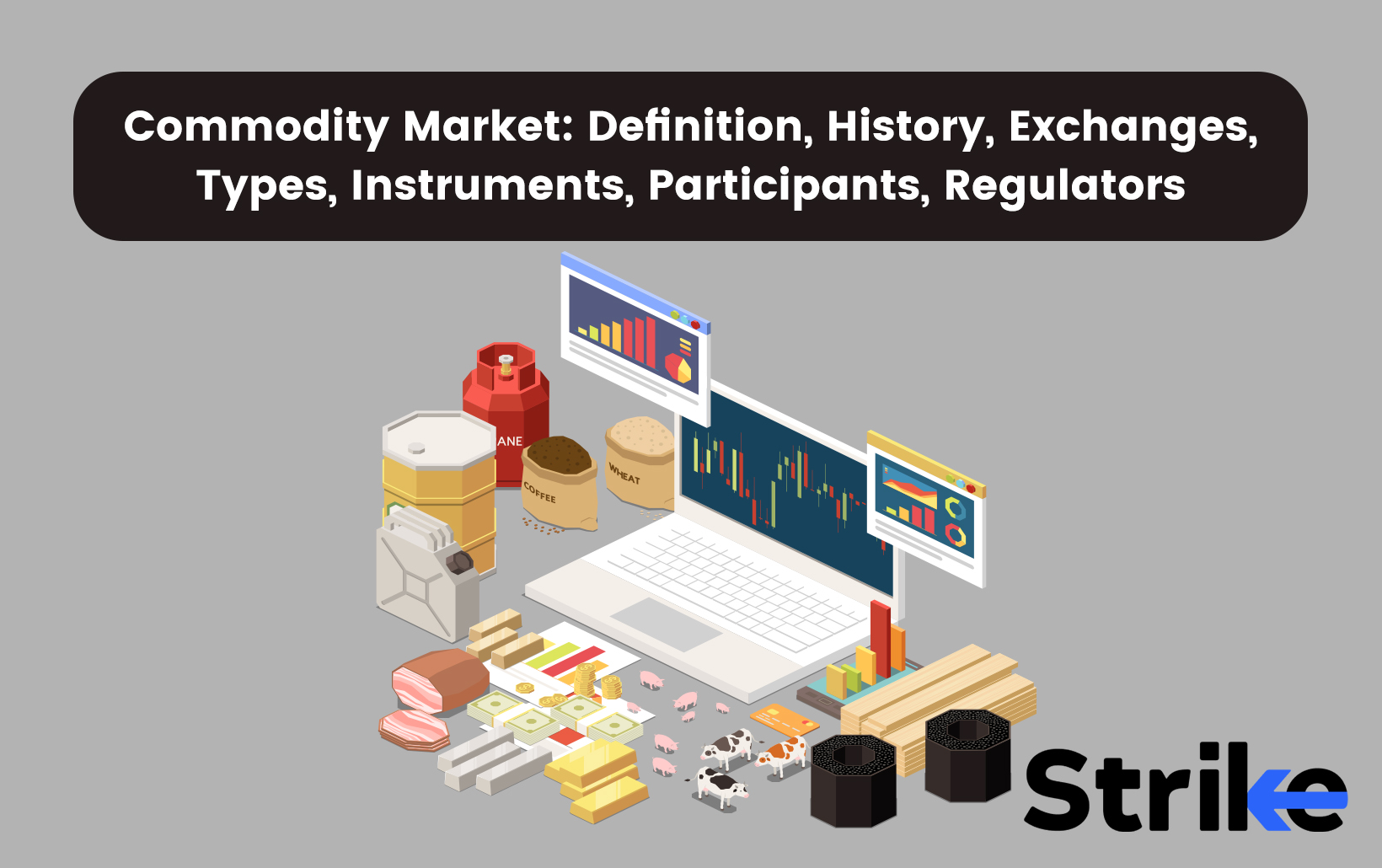
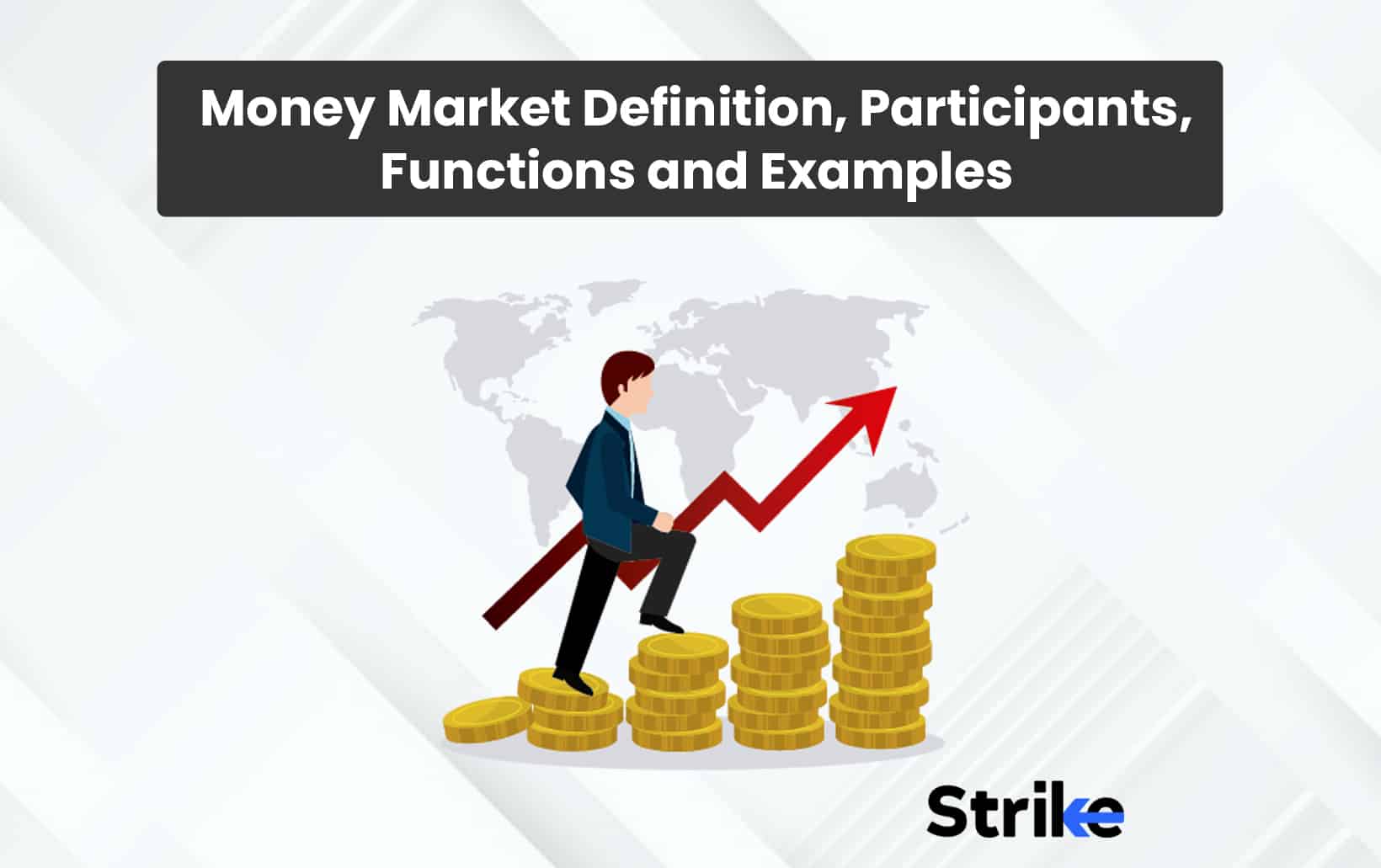
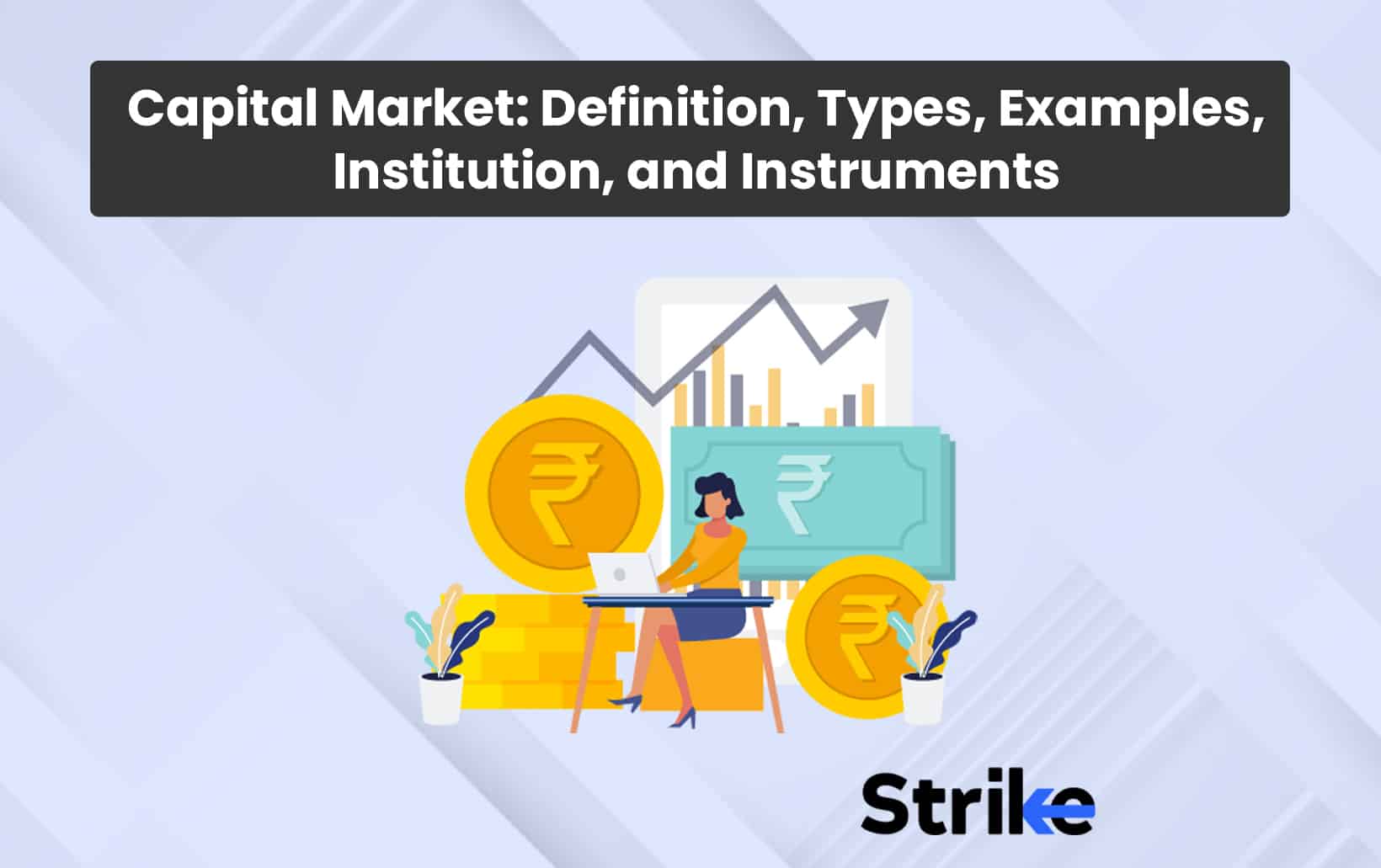
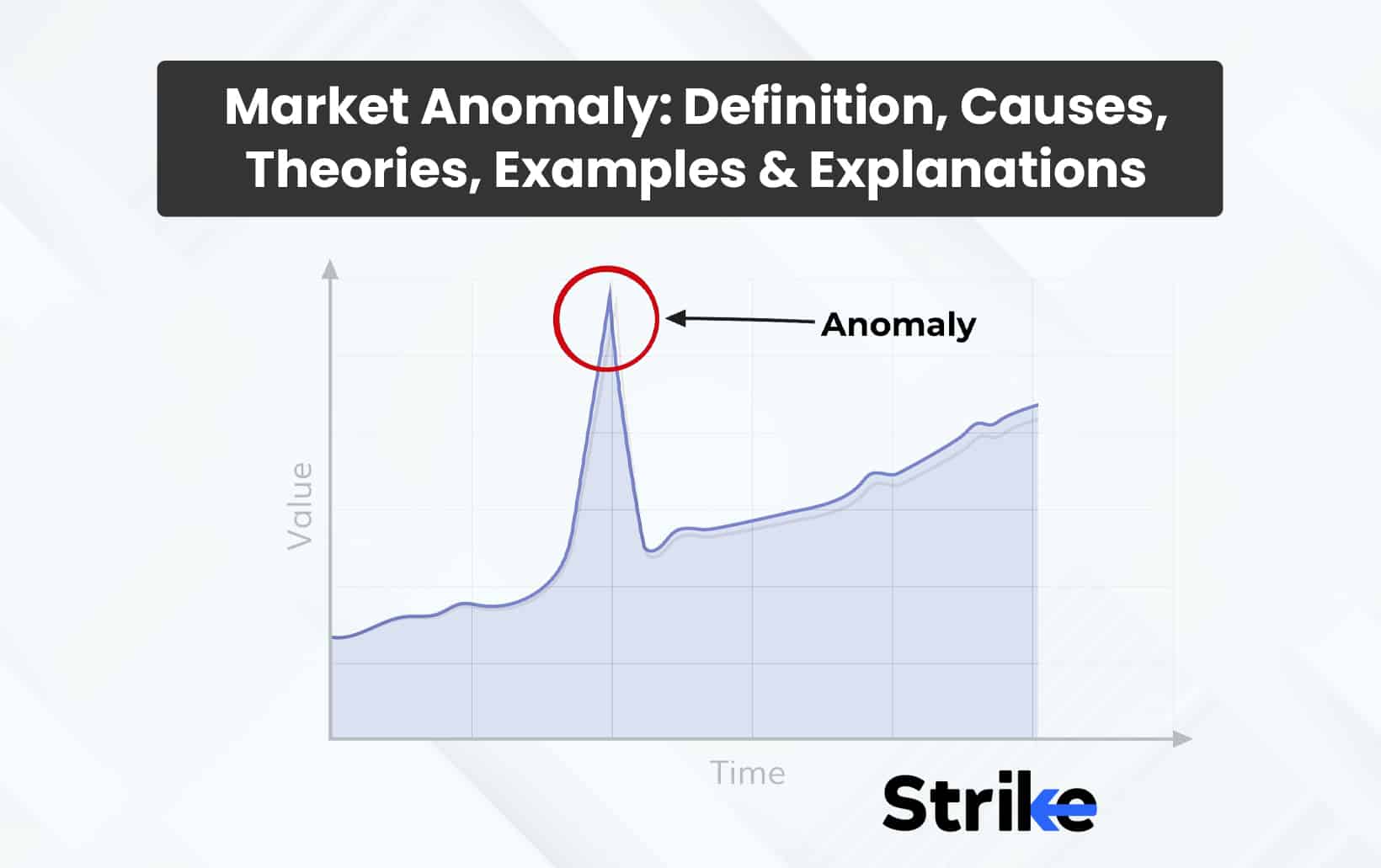

No Comments Yet